
archives for 08/2017
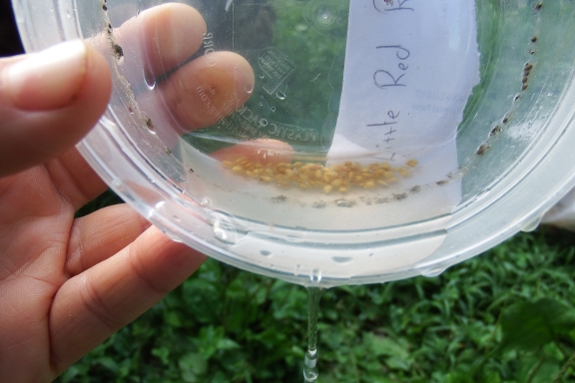
In hot summer weather,
it only takes about three or four days for a full scum of fungus to
form on top of fermenting
tomato seeds. I
scoop the scum off with my fingers, pour off the yucky water, rinse a
couple of times with clean water, then let the seeds dry. Now we're
ready for another year of no-cost tomatoes!
Our reliable green utility wagon made it on the list of tools we can't live without.
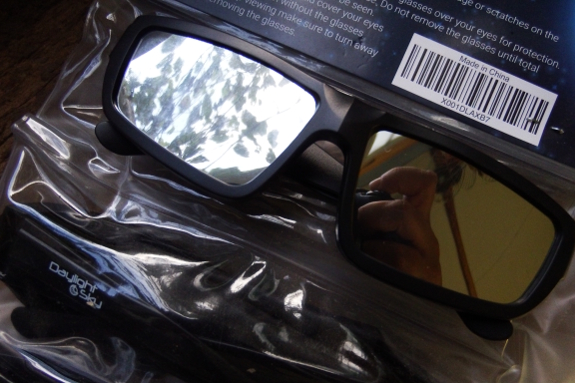
I've been duped...and I
hope you weren't too!
After reading a couple
of articles about fake eclipse glasses, I performed a simple at-home
test on the supposedly ISO certified offerings I bought on Amazon. I
placed the glasses on my face and turned toward an ordinary household
light.
From what I've read,
true eclipse glasses would have showed only total darkness in this
situation. Unfortunately, I could easily see the light through my
glasses...meaning that I could have burnt out my vision while watching
the upcoming solar eclipse.
So if you've bought
eclipse glasses, test them today. This test isn't a sure-fire way to
tell glasses are safe, but it can definitely
pull out the cheapest knockoffs like ours that aren't safe. To be 100% confident,
buy only from the approved
list of suppliers.
Good luck and hope for cloudless skies!
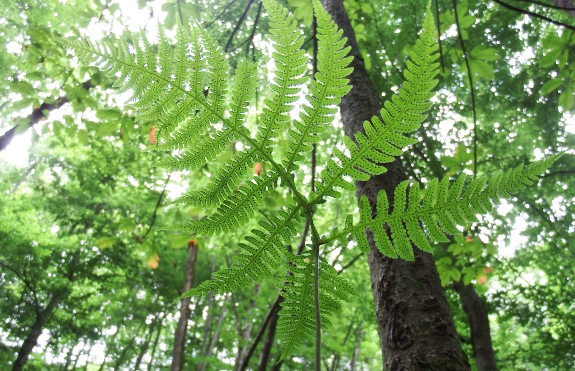
We've had an offer
accepted on just over 16 acres of vacant land 14 minutes outside of
Athens, Ohio. After weighing the pros and cons of close vs. far, house
vs. trailer, build-it-ourself vs. ready-to-go, we decided to start
again from scratch...only this time with slightly more money in our
pockets so we don't have to build outwards from a windowless trailer
that was literally worthless when we brought it home.
Over the next few weeks,
we're doing our due diligence. Making sure the ground will perc so we
can put in a septic system, performing a title search so we don't end
up with any nasty surprises down the line, and getting our mortgage
paperwork finalized. Hopefully it will all go smoothly and we'll be
ready for the serious work of the move in early September. Maybe if I
start kale seeds in flats now, we can even have a fall garden?
Removing some broken pieces of glass from solar oven double glazed window.
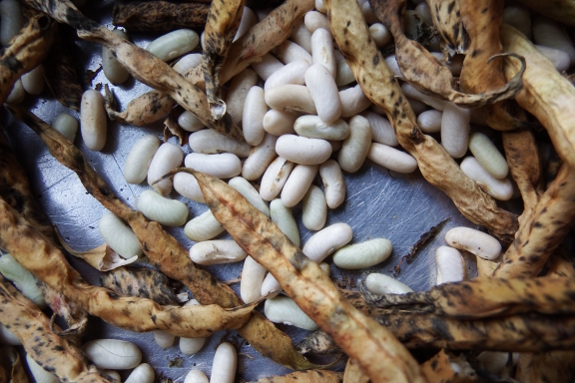
Next up on the
seed-saving docket is green beans. This is probably the very easiest
vegetable to save seeds from, although shelling the beans is a bit
time-consuming. Just wait until the pods are brown, remove the seeds
from the husks, and let the former dry for a couple of weeks until all
moisture is gone.
For more details on the
easiest vegetable seeds to save, how to process them, and more, check
out Weekend Homesteader: August.
The recent rainfall was enough to jump start some mini-mushroom log fruiting.
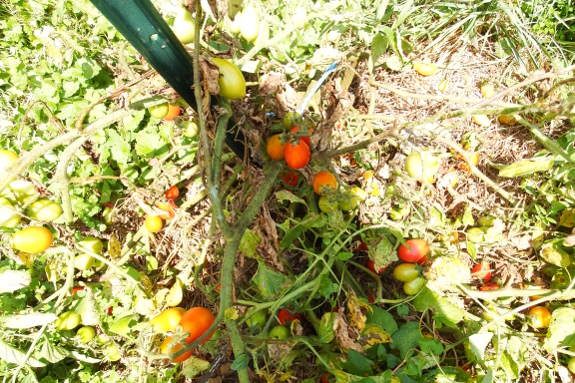
In the midst of packing
and preparing to move, I've let our garden go. Without pruning and
tying up, the tomatoes out in the weather have predictably begun
succumbing to blight.
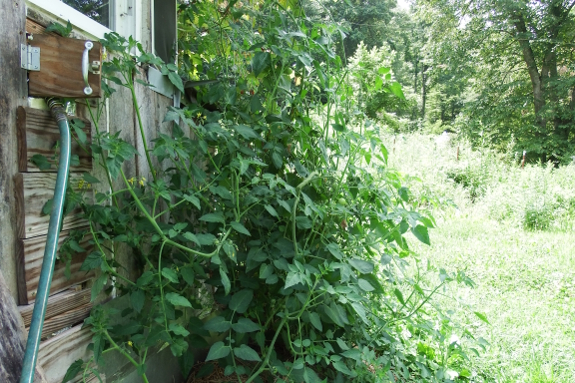
Contrast that to plants
only ten feet away that have enjoyed the
shelter of the roof overhang. These plants are green and
vibrant and covered with ripening fruit.
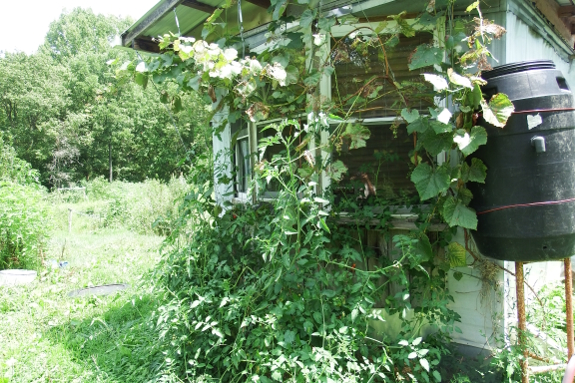
The second story --- the
grapes --- have shown a similar response to the roof overhang. Fruits
that stay dry during rains are mostly rot-free while around 75% of the
fruits exposed to the weather have succumbed to fruit rot.
Looks like a roof
overhang is a very important gardening asset in wet
climates...especially if you want to be as hands-off as I've been this
year!
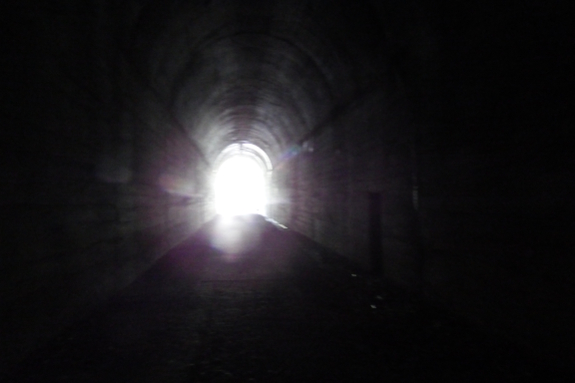
We haven't posted about
it much because the process isn't very photogenic, but we've been
spending an hour or two every day packing and preparing for our move.
Eleven years' accumulation of stuff was pretty daunting, but we're
starting to see the light at the end of the tunnel.
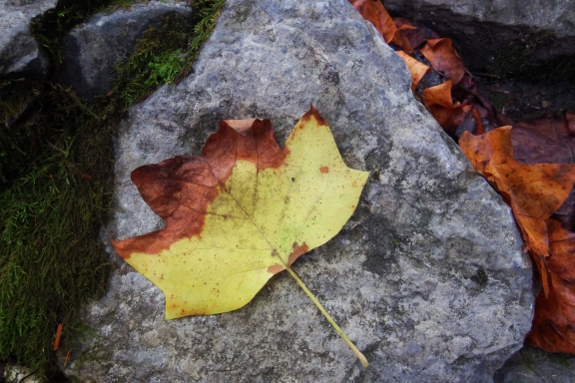
In some ways, I had it
easier than Mark. I started sorting before the floodplain dried up
enough to drive on, so I was able to make some pretty draconian
decisions. I'd pick up an item, imagine carrying it half a mile through
the swamp...and decide that there was very little that I actually
wanted to take with me after all.
Once the Kubota was back
on the job, I lowered my standards a bit. Had I used the item in the
last year? If not, that meant it needed a new home.
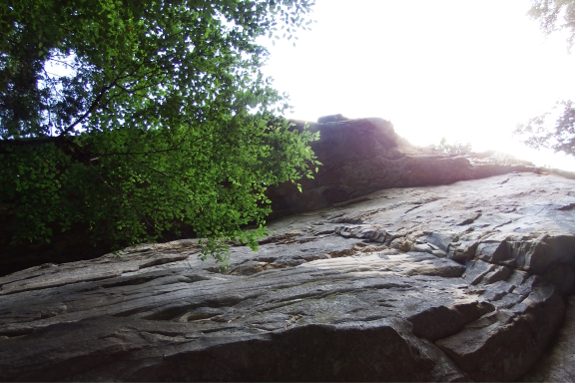
All of that said, I have
a feeling that when I finally unbox some of these sacred possessions a
month or so from now, I'll find I didn't miss them in the interim. In
which case, I'll expunge a bit more. I always forget how light I feel
when I have fewer possessions weighing me down!
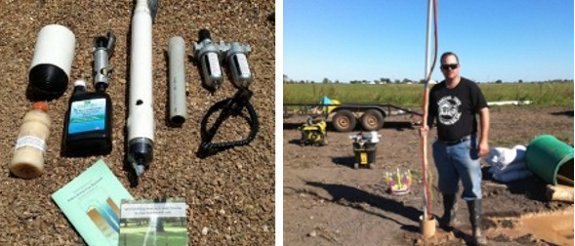
Howtodrillawell.com sent me
their instructions with 2 DVD's.
After watching the DVD's I've
concluded that this method could work in most situations if you are
willing to follow instructions and keep working at it. It's quite
clever. You'll need a good sized air compressor.
The cost savings could be
substantial. Especially if you need a well in a remote location that
would be difficult to get heavy equipment into.
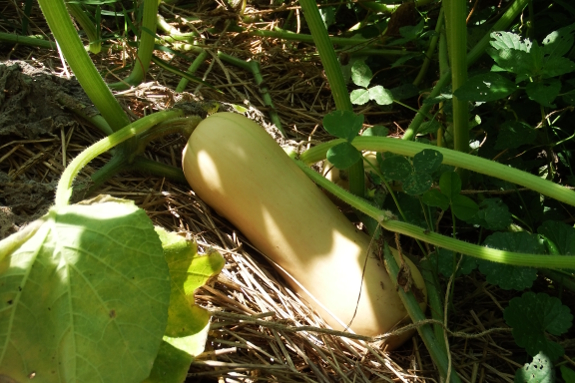
While I've been busy
prepping for our move, the garden has been carrying along without me.
Weedy and overgrown, the beds are still managing to ripen up quite a
lot of vegetables, most about two-thirds the size of my usual specimens
but not bad considering the neglect.
Perhaps the experience
of harvesting from an unweeded garden will help me lower my standards
when I begin again in a new plot of earth?
We've gone through a few rain
gauges over the years that don't seem to last.
This Stratus professional rain gauge is
easy to read and is built to last.
Yes. It made it on the list
of items to be moved to the new homestead.
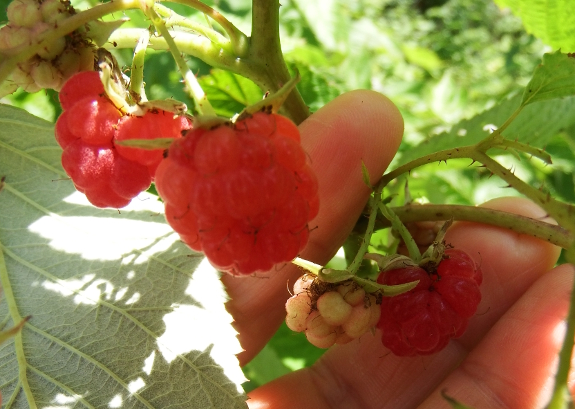
The grape harvest is
starting to slow down, but the midsummer raspberries are luckily right
on track to fill in the gap. Before Mark cut me off from further
transplanting, I potted up three of these Taylor
Red Raspberries to
start our new planting. This winter, we'll buy a fresh run of
everbearers to extend the season into the spring and fall.
Is it still considered moving if all the dirt goes with us in the form of potted plants?
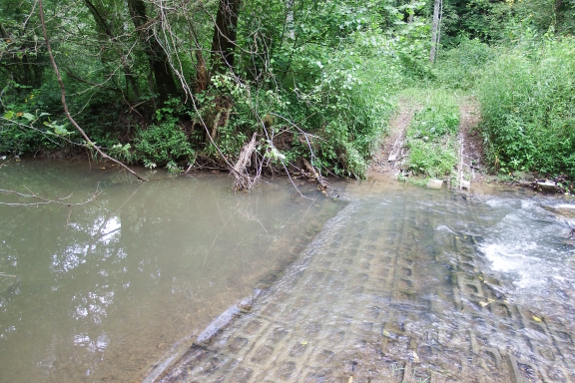
How is our low-cost,
homemade creek crossing holding up eleven years
later? I've actually been really impressed by the ability of the ford
to withstand dozens of floods, tree trunks washing across its width,
and the usual wear and tear of wheeled vehicles crossing over time
after time.
The only big thing we would
have done differently is to decrease the slope on the side shown in the
image above. The other approach is much shallower, created with the
help of a rented bobcat. But when we tried to go up the far bank, the
equipment got stuck in the creek and scared us to death, so we opted to
dig it out by hand. The result, predictably, was a steeper incline that
tends to rub bumpers and create a slip hazard for human traffic.
Other than that, though,
the ford has done its job very well. For the sake of comparison, the
second photo shows what it looked like when newly created. Not so
different from today!
Boxed up most of our tools and hardware that luckily fit into a Kubota load.
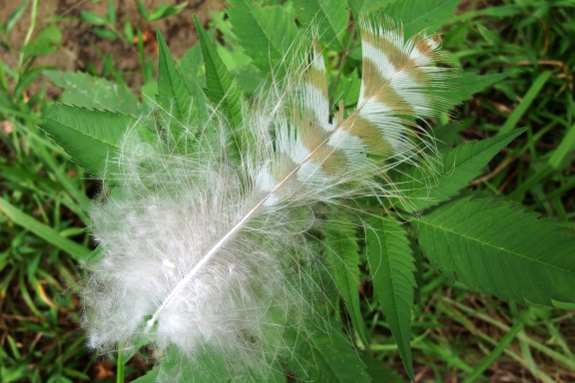
We've had several
move-related questions. Let's see if I can sum our answers up in one
post.
Especially with buying
raw land instead of a ready-made homestead, there are a lot of hoops we
have to jump through before we can settle in up north. Unfortunately,
most of them are out of our control, so we don't have an actual
timeline. I've been marking fun events to attend down on my planner
starting on August 30 (Ecuadorian ethobotany!), but I'll be quite happy
if we sleep the first night on our new land by the middle or even end
of September.
(Okay, I'm lying. I'm
totally impatient and want to be there now, now,
now! But I'm
pretending to be okay with the slow speed of real-estate deals.)
Mark's mom and her
partner have very kindly offered to bring a covered
trailer about six feet wide by nine feet long to transport our stuff, while Mark and I will follow
behind in a car full of unhappy cats. That said, I'm tentatively
planning to cram every nook and cranny of our car with potted plants
when we go up to Ohio for the closing. My floral offspring should
(hopefully) survive a couple of weeks on their own as long as the
weather isn't too hot and dry.
I'll admit that I was
having trouble focusing for the first couple of weeks after deciding to
move. But recently, I've actually gotten more done than usual. Most of
my move-related tasks are complete, and I don't have a garden to
manage. So I'm writing up a storm and actually feel a bit like I'm on
vacation. Looks like this change of venue is already a good idea.
Ever bearing raspberries turn a distinct shade of red when they are ready to eat.
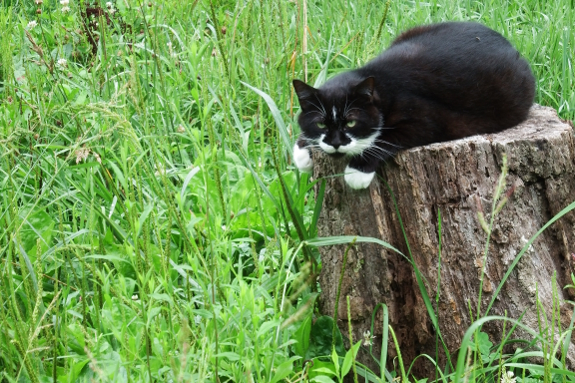
With the weather slated
to turn wet(ter), Mark and I pushed through several more loads of
hauling. Strider, on the other hand, took advantage of a dry hour to
nap out on the splitting stump. "Don't push it," he told me before
going back to sleep.
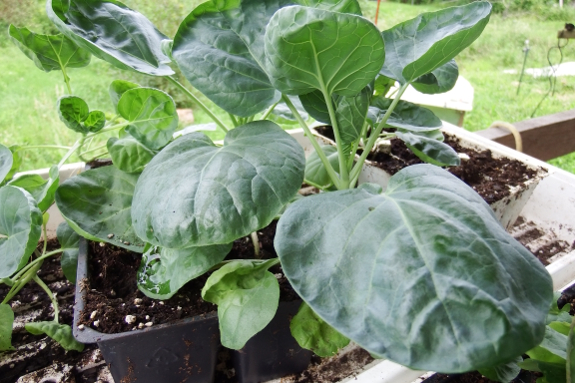
Usually, I like to get
baby plants into the ground as soon as possible. But I've been holding
over fall crops, trying to decide whether to give them away or save
them for our new homestead. And, in the process, I collected some data
on how long crucifers can hang out in flats without starting to
complain.
Of course, the answer to
this question depends not just on the type of plant you're growing, but
also on the type of soil and the number of cells in the flat. More
cells = smaller root zone = shorter happy time for baby plants.
With that caveat aside,
here's some data for you. I started the Brussels sprouts pictured at
the top of this post on May 15, nearly three solid months ago. And
(using the slow-release fertilizer in the store-bought potting soil),
they're still thriving in their 54-cell flats.
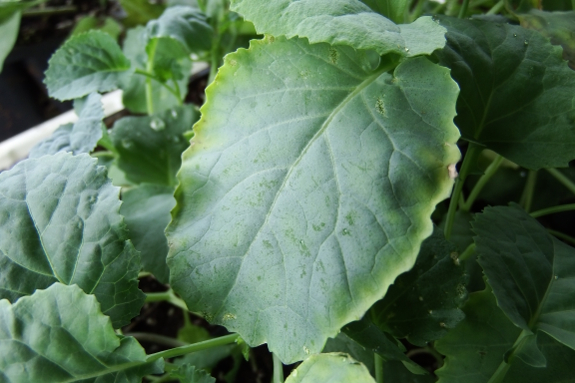
Broccoli, on the other
hand, went into a 72-cell flat with the same soil on June 16...and they
were already starting to complain six weeks later. Looks like it would
have been much cleverer to use larger cell sizes for seedlings
intended to be held over, especially if they're as hungry as greedy
broccoli plants. Live and learn!
I switched from the largest rip rap gravel to the 3-4 inch gravel and it seems to be a better fit for our troubled spots.
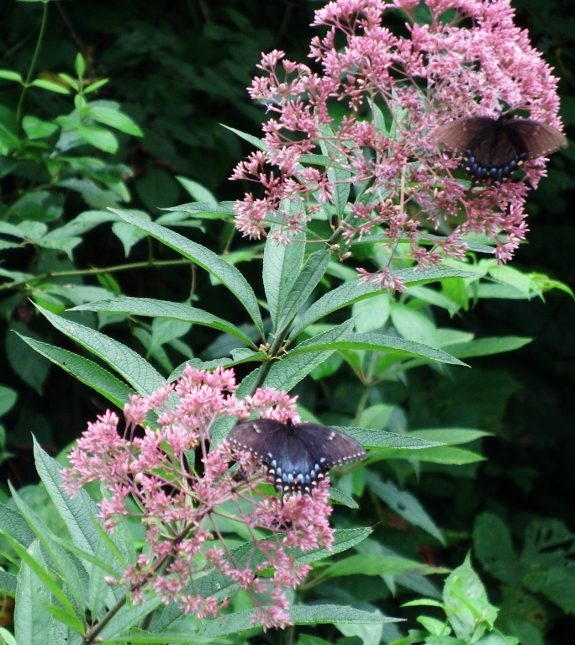
Did you ever wonder how
Joe Pye Weed got its name? After a bit of googling, I discovered that
Joe Pye was a Massachusetts Native American who used the plant to treat
fever in the early nineteenth century. (Or so the
only page that cited sources suggests.)
I'm not sure that
butterflies care what this late-summer flower is called. They seem
grateful for copious nectar sources now that their wings are beginning
to succumb to wear. Perhaps that's a lesson in mindfulness right
outside our back door?
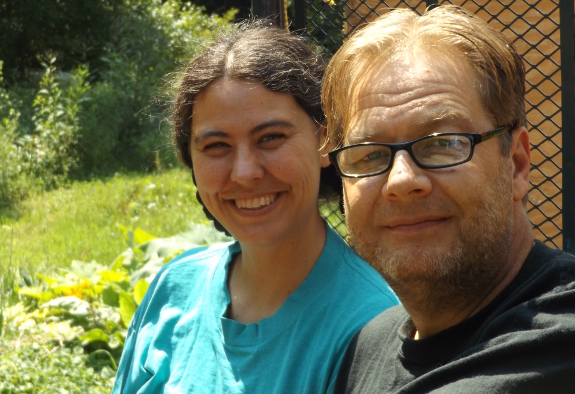
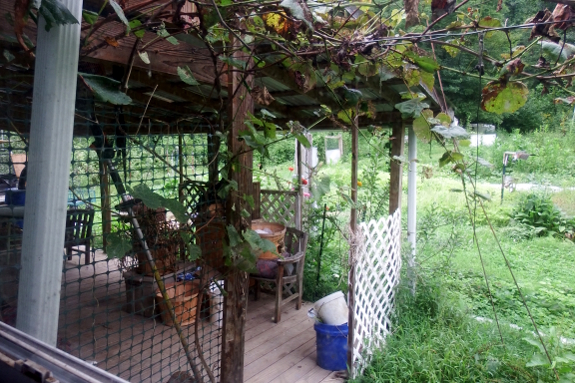
With a lot of our
packing done, this week will be committed to cleaning, mowing, and
helping our homestead put its best foot forward as we get in touch with
a realtor and prepare to sell. In the process, I'm also taking copious
notes on aspects of the homestead I want to replicate in our new
stomping grounds.
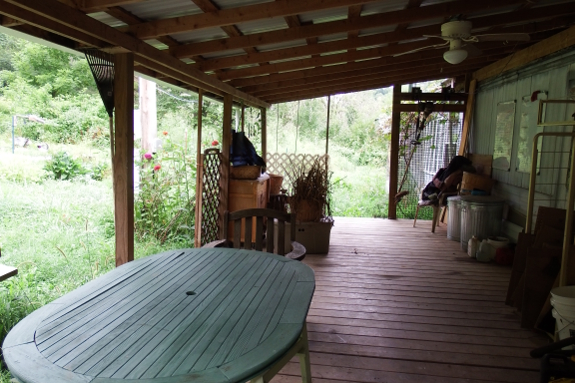
Porches are a biggy, and
after having three of them built I finally know exactly what I want.
Our front porch --- 12 feet wide by 24 feet long --- is a perfect size,
luxuriant and open with lots of space for curing vegetables, drying
seeds, and dining.
Unfortunately, we don't
use it as much as I'd like in the summer --- prime porch season ---
because the structure faces south. So the perfect porch on my opinion
would be just like this one...but on the north side of the house for
summer shade. As a bonus, the north face of our new place will face
into the woods and away from the road, making it a perfect fit for
private summer living.
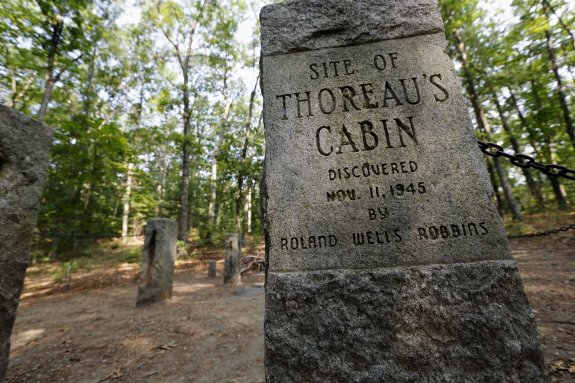
A design team of 8 video game
creators have been working on a
Walden game for the past 5 years and released it this Summer.
The game uses detailed notes
that Thoreau took about his daily routine.
It takes place in a real-time
3D environment which creates the geography of Walden pond and the woods
around it.
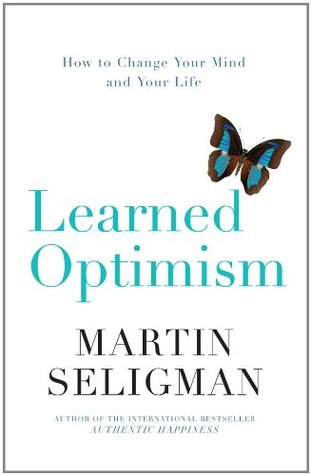 Learned
Optimism by Martin
E. P. Seligman isn't really homesteading-related. But I've found that
mindset is very important in everything ranging from creating a
microbusiness to keeping your garden weeded, So I'm going to regale you
with highlights from this classic for the rest of the week.
Learned
Optimism by Martin
E. P. Seligman isn't really homesteading-related. But I've found that
mindset is very important in everything ranging from creating a
microbusiness to keeping your garden weeded, So I'm going to regale you
with highlights from this classic for the rest of the week.
First, though, I wanted
to write a little about the book itself. Seligman is considered by many
to be the father of positive psychology, and given some of the tripe
that fills that field, I wasn't sure what to expect. Imagine my
surprise to find that his book reads like a Lorenz- or Tinbergen-style
popularization of years of intense scientific research. No woo-woo here!
In fact, the most common
negative review of the book can be summed up as follows: too much data.
So if you don't enjoy looking behind the curtain and seeing how science
is done, you might want to skip the middle half of the book. On the
other hand, the beginning and end should still be up most people's
alleys. And, personally, I found the middle eminently readable...but I
do have a background in science.
I should warn the
potential reader about a couple of other problematic aspects as well.
First of all, the book is nearly thirty years old at this point, so you
might be left feeling like you need to delve into the recent literature
for updates. (Not necessarily a problem, although a potential time
sink.) More troubling, there are some animal experiments that will make
the squeamish cringe (although I didn't find them nearly as bad as I'd
thought they would be). So read at your own risk!
Okay, enough about the
book itself. Tomorrow, I'll present the highlight of Seligman's
research --- the finding that thought patterns developed as children
will determine your future success, health, and more. And those
patterns aren't set in stone --- you can change them if you're willing.
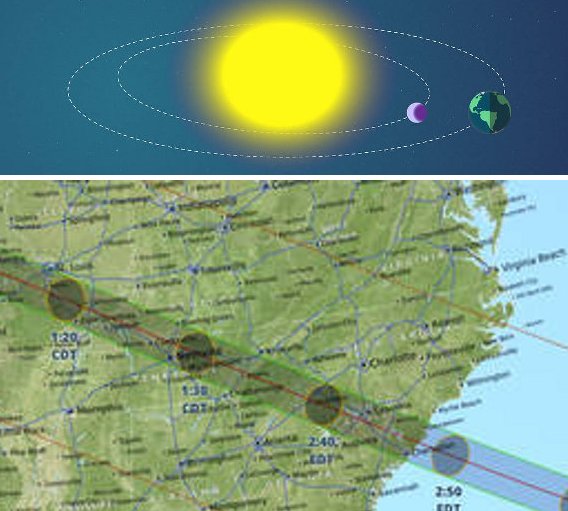
It's less than a week before
the 2017 Solar Eclipse.
We'll be driving 3 hours that
morning to arrive at the path of Totality.
We've been looking forward to
this all Summer.
 In Learned
Optimism, Martin E.
P. Seligman sets out to understand why some people, when faced with
adversity, dust themselves off and jump back into the game while others
cave in and give up. He concludes that optimists possess a world view
that makes them more resilient in the face of life's inevitable
problems while pessimists lack that internal resiliency.
In Learned
Optimism, Martin E.
P. Seligman sets out to understand why some people, when faced with
adversity, dust themselves off and jump back into the game while others
cave in and give up. He concludes that optimists possess a world view
that makes them more resilient in the face of life's inevitable
problems while pessimists lack that internal resiliency.
The results of a
pessimistic world view are startling. Pessimism dramatically increases
your risk of clinical depression and it also tends to make you age
faster and less gracefully. Pessimistic people --- even if they began
with the same or greater talent --- also succeed less often in life
(graduating from college, getting raises at work, winning at sports,
etc.). Basically, being pessimistic is bad for your health.
So what's the little
difference that creates these big results? In some ways, it's a simple
mind game. Pessimists believe that bad things "will last a long time,
will undermine everything they do, and are their own fault." Optimists,
in contrast, tend to use the struck-by-lightning hypothesis ---
everything bad was caused by external forces, isn't likely to be
repeated, and is only temporary. "The optimists," Seligman writes,
"believe defeat is not their fault."
If you're a
dyed-in-the-wool pessimist, does that mean you're sunk? Luckily, no.
It's quite possible to change your thinking and change your life
trajectory. In tomorrow's post, I'll start showing you Seligman's
method how.
We let the mowing getting a
little behind schedule this Summer.
Thankfully the Honda double
blades can handle the extra high lawn by going slow.
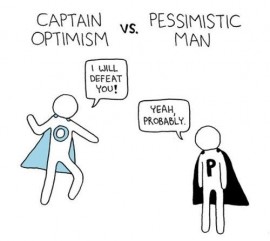 So what's Martin E. P.
Seligman's recipe for learned
optimism? The idea
is to focus on the negative thoughts that run through your mind right
after you've been slapped the face with a setback.
So what's Martin E. P.
Seligman's recipe for learned
optimism? The idea
is to focus on the negative thoughts that run through your mind right
after you've been slapped the face with a setback.
As
I mentioned yesterday,
pessimists make every adversity personal ("It's my fault. I'm such a loser!"),
pervasive ("This is going to ruin everything!"), and permanent ("The
awfulness is going to last forever!"). Optimists do just the
opposite, attributing setbacks to external forces, compartmentalizing
negative results into a single aspect of their life, and realizing that
all bad things pass given enough time.
Okay, I can hear you now
--- what about when it really is your fault and the problem
really is going to ruin your life
forever? First of all, Seligman admits that in some situations,
pessimists have been shown to have a more accurate view of the world.
"If the cost of failure is high, optimism is the wrong strategy," he
warns, citing airplane pilots trying to decide whether to de-ice an
extra time and folks contemplating extramarital affairs as people who
would be better off staying pessimistic for the near future.
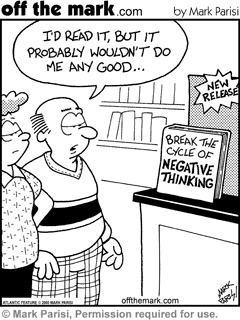 However, in most scenarios,
Seligman finds that our pessimistic worldviews are equally skewed in
the opposite direction, in which case retraining your brain for
optimism will improve your health and energize you to reach your
fullest potential. Want to give it a shot? Start out with his first
exercise --- every time you experience a setback today and tomorrow,
write down what happened, the feelings and beliefs that immediately ran
through your head, and how those thought processes skewed the rest of
your hour or day.
However, in most scenarios,
Seligman finds that our pessimistic worldviews are equally skewed in
the opposite direction, in which case retraining your brain for
optimism will improve your health and energize you to reach your
fullest potential. Want to give it a shot? Start out with his first
exercise --- every time you experience a setback today and tomorrow,
write down what happened, the feelings and beliefs that immediately ran
through your head, and how those thought processes skewed the rest of
your hour or day.
For bonus points, try to
think up alternative reactions that would have felt less personal,
permanent, and pervasive. Would realizing that the average test grade
in your class was a C make your B look pretty hot? Would remembering
how you dealt with a similar problem last week help you realize that
there is a path through the awfulness?
Then, when you're done,
you might want to check out the other exercises in
Seligman's book.
Enjoy!
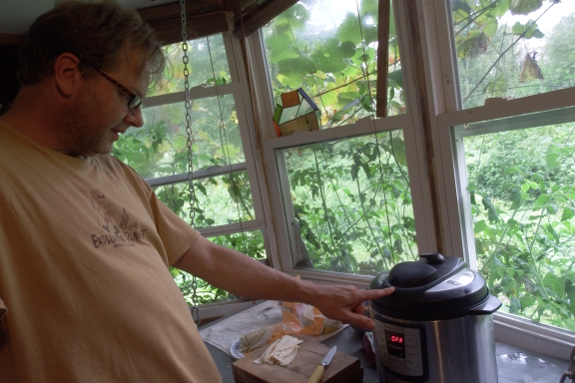
The Instant Pot
achieved the unthinkable --- its tool-likeness tricked Mark into
learning to cook. His first batch of chicken enchiladas was a
resounding success. The only downside? Now I have to learn to wash
dishes!
All the stores in our area
are sold out of Eclipse glasses.
Anna called them all within
an hour driving distance.
Thank you Bristol Public
library for the free NASA eclipse glasses.
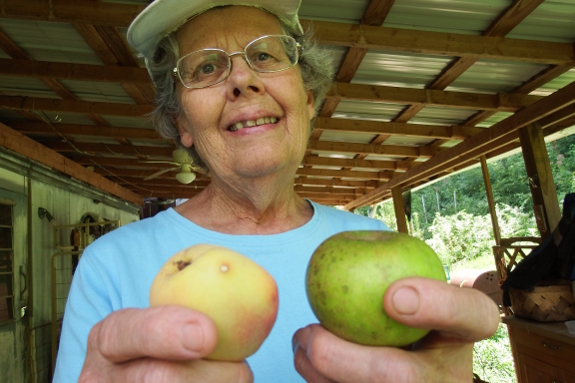
Mom brought over one of
her homegrown Cox's Orange Pippin apples for us to taste last weekend.
Mark wasn't a huge fan, but I loved it. The flavor is like a sourer
version of Golden Delicious, with plenty of acid tones to complement
the sweet.
Actually, Mom suspects
she may have picked the fruits too soon, even though the seeds were
quite dark (a sign that an apple is ripe). So maybe we'll try another
fruit next year and see if there's a difference?
I wanted to check if our thick
solarization plastic failure from last month had done any more weed
killing with an extra month of cooking.
There were even more weeds
than 4 weeks ago.
It seems like the thicker
plastic lets enough light through to function like a greenhouse instead
of a weed killer.
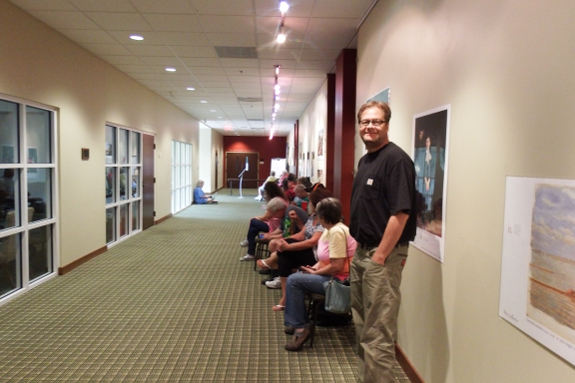
Mom and Maggie kindly
came and sat in line with us for two hours at the library so we could
get eclipse
glasses to replace the knockoffs
we'd originally bought. On the way out the door, 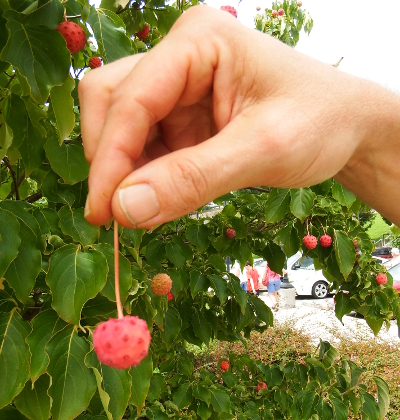 Maggie asked if I could ID a
tree. "I think that's the edible relative of a dogwood..." I said,
peering at the puffy red fruits.
Maggie asked if I could ID a
tree. "I think that's the edible relative of a dogwood..." I said,
peering at the puffy red fruits.
Sure enough, when I got
home and looked the plant up, it materialized into a kousa dogwood. The
fruits are reputed to taste like strawberries or pawpaws, but are a bit
tough to eat. You don't consume the skin or the seeds, just
squeeze/suck out the soft flesh.
Of course, I didn't take a fruit home with me, so now I'll have to toss
this back to the Bristol contingent for a flavor report. If you're
brave enough to give one a try...what did you think?
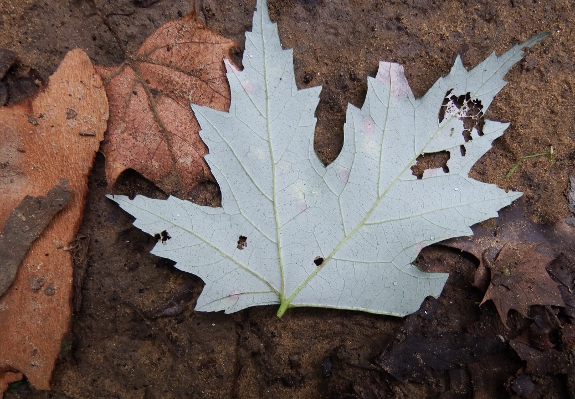
I've been avidly reading
all of the eclipse-related blog posts hither and yon. In addition to being
amazed by people who have seen thirty or more total solar eclipses,
I've picked up some interesting tips that go beyond the obvious safety
rigamarole. Here are the top two for your entertainment....
Two and a half minutes
of totality isn't very long. So some of the smartest eclipse-watchers
tell you to set your camera down and not even try to take a shot. I
suspect I'll snap one photo to share with our readers, not worrying
about its quality, then settle in to watch the show.
Speaking of the show,
did you know that some pros wear a patch for fifteen to twenty
minutes before totality over one eye? That way, they can watch the
partial eclipse unfolding...then open their night-sensitive eye as the
Bailey beads fade and enjoy a much more heightened viewing experience
of the total eclipse.
How about you? What's
your game plan?
(And, as an aside to
family readers who check this space assiduously to make sure we haven't
been eaten by bears --- it's a long drive, so I doubt Mark will post
tonight. Don't worry! The bears will go hungry tonight.)
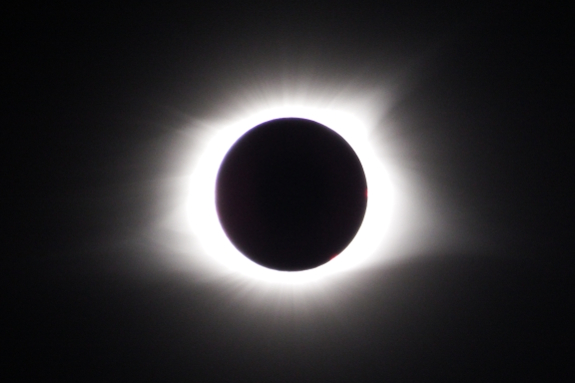
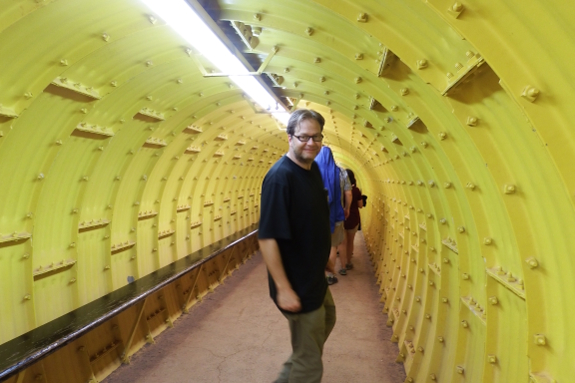
After baking in the sun for a bit over an hour
watching the eclipse, we moved onto the second phase of our adventure
--- Lost Sea Caverns. In retrospect, planning to hit a cave in the zone
of totality a few hours after the event wasn't such a great move since
it meant lots of waiting in line. But I'm still glad we went.
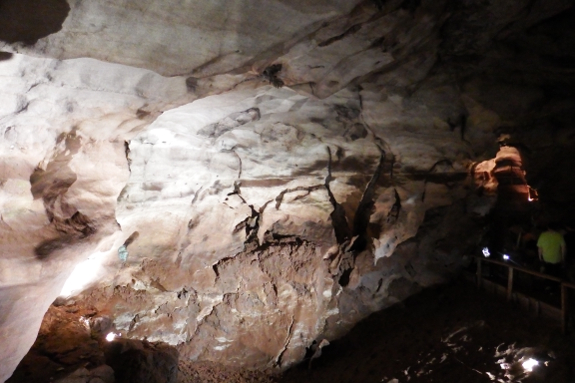
The highlight of Lost
Sea Caverns is a four-acre underground lake at the end of the tour. But
the rest of the cave is also huge and beautiful.
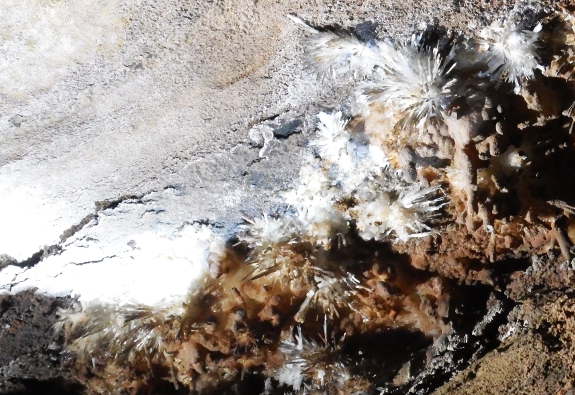
My main point of
comparison is Bristol
Caverns,
and I'd have to say Lost Sea lacks a lot of the intricate formations
found there while making up for that lack with a host of intriguing
features all its own. For example --- rare cave flowers that resemble
sea urchins stuck to the ceiling...
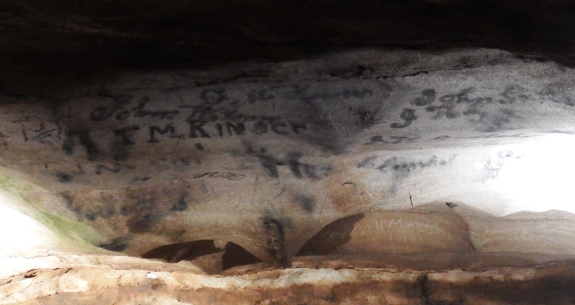
...and signatures from
Confederate soldiers.
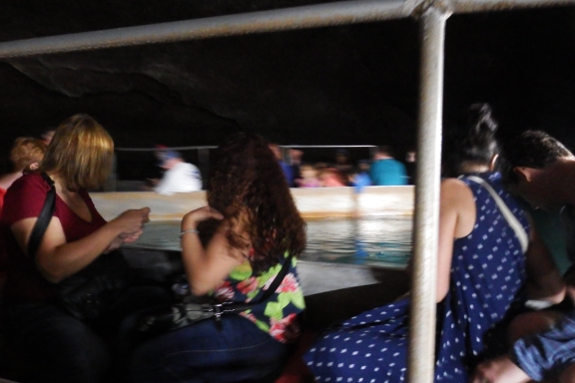
I'd have to say the boat
ride was my favorite part though.

As usual when on a
guided cave tour, I wished there was an option to travel in silence and
spend more time soaking up the wonderousness of the surroundings.
Still, we got lucky with an awesome, geology-trained tour-guide (ask
for Thomas) and came home with lots of intriguing tidbits to ponder.
All around, an inspiring
end to a day begun by staring at the sun. We definitely made this east
Tennessee vacation count!
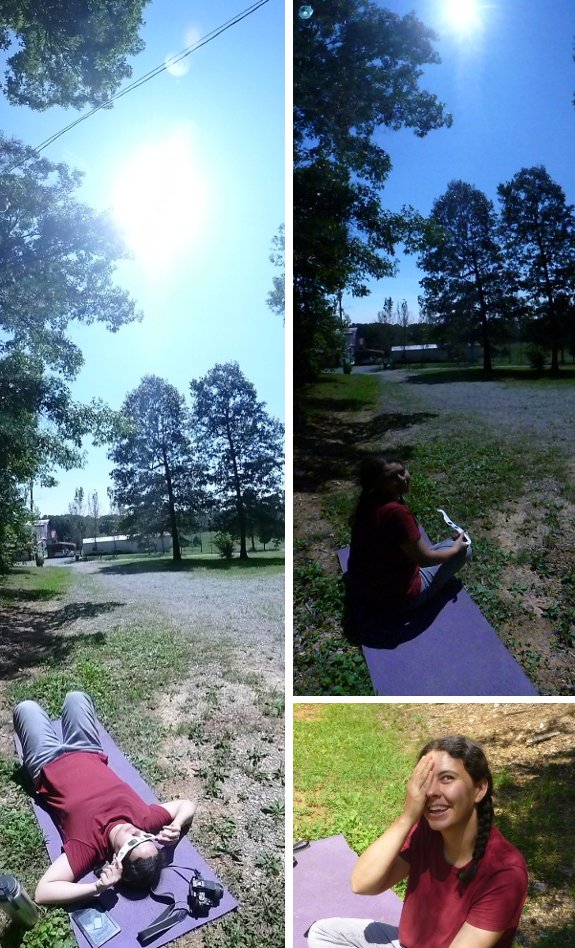
Our 2017 Eclipse viewing spot
was perfect.
The traffic was heavy but
manageable.
It was Amazing!
We're already making plans
for 2024.
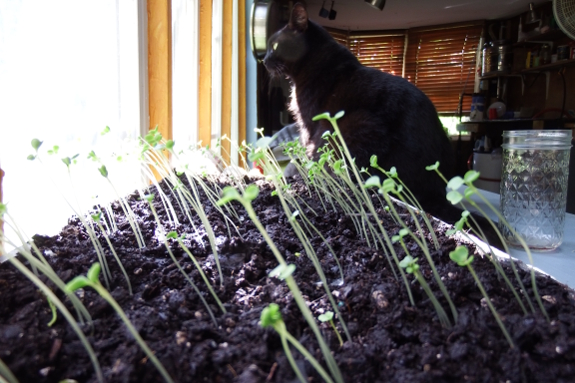
We haven't written much
about our upcoming move for a while because the
adventure has mostly consisted of a mass of unphotogenic paperwork.
Still, here's a glimpse behind the scenes in case anyone else is taking
notes in preparation for their own land-buying episode.
First of all, we broke
up with our original bank. Despite my post on the topic, choosing
a local bank doesn't
seem to be the be-all and end-all of finding a good mortgage for a plot
of land. The bank we chose was on board, but when the loan-estimate
paperwork came in they'd more than doubled the proposed interest rate.
Too bad we'd already paid for an appraisal --- that's $374 we'll never
see agin.
On the plus side, a
little sleuthing turned up the fact that you can join the Ohio
University Credit Union by simply making a donation to the
library (which means I'll come home with a university library card in
addition to a mortgage --- score!). Working with the credit union has
been like night and day compared to the other bank. The credit union
didn't balk at funding a plot of land with only electric and water on
it, didn't bait and switch on interest rates, and each step of the way
has been ultra fast. I highly recommend them.
That said, the funder
swap has set us back a week or two. So I guess I'll have to let our
earliest potential move-in date slide by and instead start crossing my
fingers for mid to late September. Here's hoping my kale seedlings (and
impatient personality) can handle the delay.
We grew a patch of sorghum
for the goats but they're gone now.
It's not enough to press into
a molasses.
What could it be used for?
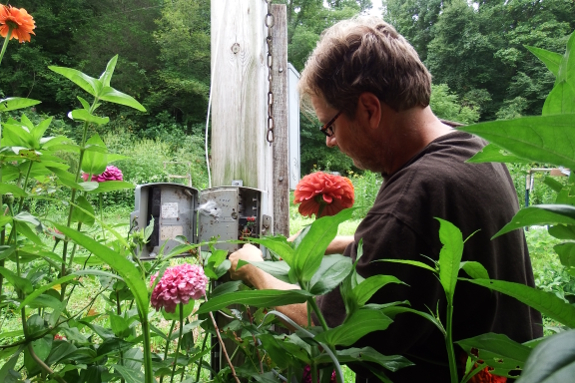
Troubleshooting
month-long phone and internet issues has been a slow process, but we
finally nailed the issue. After replacing our router, our phone, and
the line out to the box, we proved to the techs that the issue was
outside our control. Sure enough, they tracked down a partially severed
line over a mile away. Finally, we should be back on track!
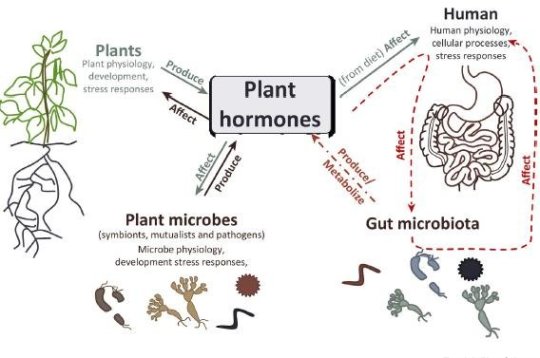
I don't usually post raw
links, but this
one is an
interesting read. Basically, the scientists in question concluded that
the hormones in the plants we eat can directly affect both our bodies
and our gut microbes.
For example allowing your plants to be exposed to drought conditions
prompts those veggies to produce abscisic acid. This chemical has been
linked to inflammatory bowel disease and other problems...but at the
same time the chemical can help alleviate diabetes. So I guess the
upshot is --- consider your own ailments when deciding whether or not
to water those brussels sprouts....
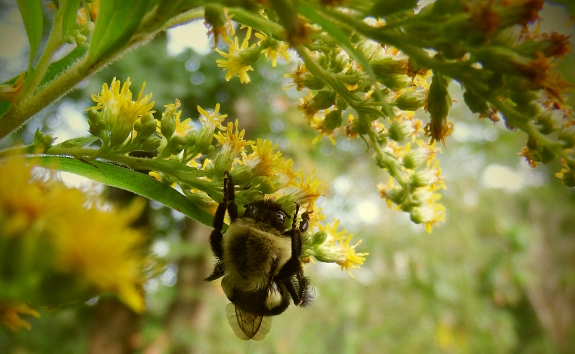
After five months
running to the outhouse at the drop of a hat then nine additional
months on a severely restricted diet...I can eat! I'm a bit giddy with
the flavors. Fruit between meals! Dishes seasoned with onions and
garlic! Ice cream! It's like walking out of black and white and into
color.
So what fixed me? I
hesitated to make this post and I'm still going to keep it short. But
since so many people deal with irritable bowel syndrome, I thought it
was worth pointing out a potential light at the end of the
tunnel...even if the light didn't come from the direction I'd thought
it would.
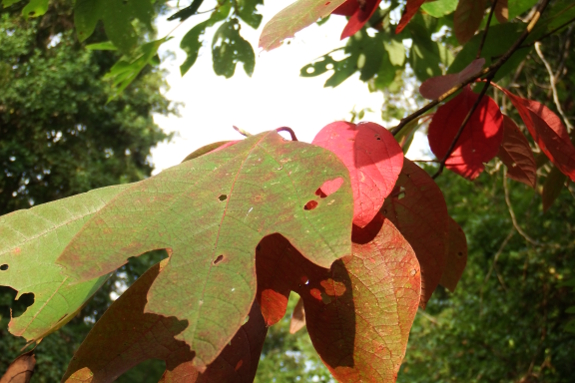
I'll start with the
slow-but-relatively-sure approach that did appear to be making a
difference over the first year --- lots of rice to rest my gut, a low
FODMAP diet to
prevent additional irritation, increasing my morning walk to two miles
per day, cognitive-behavioral therapy plus major life changes to lower
my stress and anxiety levels, and the biggie...time. This combination
of treatments really might have healed me eventually even if I hadn't
accidentally pulled out the big guns.
But that's not what let
me start eating again. Progesterone was.
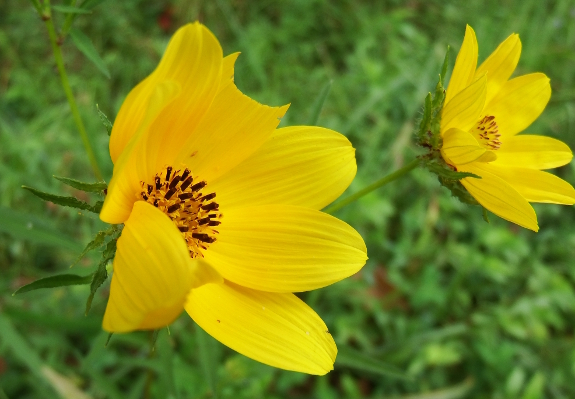
Earlier this summer,
Mark talked me into visiting a holistic doctor who
ran a battery of tests and concluded that, despite my age, my
progesterone levels were at perimenopausal levels. Warily, I agreed to
a daily hormone pill...and within a couple of weeks I was getting an
extra hour of sleep per night while also feeling relief from tricky
women's
troubles that had crept into my life over the last few years. Two
months in, I began testing the foods that used to mess me up and
finding no ill effects. Could my grumpy gut really be as simple as a
hormonal imbalance?
I'm a bit leery of staying on progesterone forever, although I have
commited to the crutch until our move is complete. In the meantime, I
figure I might as well add yet another stress-relieving gun into my
arsenal. Time to learn to meditate!

Will the WaldenEffect blog
continue when we move North?
Thanks for asking and thank
you for reading and telling a friend.
Yes. We plan to blog about
starting from zero and building our new homestead when we move to
Athens Ohio within the next month.
In the meantime we will cut
back to one post per day until we move and get settled and have
something more substantial to share.
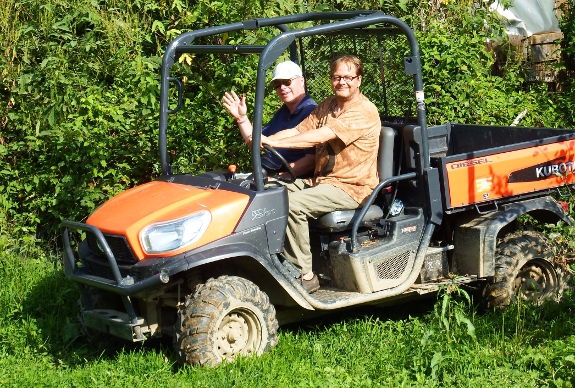
Step one for selling was
to decide whether or not to go with a realtor. After some deep thought,
Mark and I opted to the conventional route on our very unconventional
piece of property. We did, however, hunt through the agents on Zillow
until we found one who looked willing to get his feet muddy.
Enter Chris Ward from Bennett
and Edwards Realty.
Chris was a pro when he came over to check out the place Saturday, and
we look forward to sharing his listing with you soon. Stay tuned!
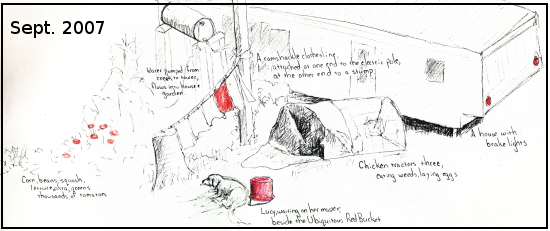
Chris
Yes. For the right price we
would sell the blog and domain name that makes up the WaldenEffect
brand.
Our main objective for this
blog has always been to function as a journal to record and share our
homesteading adventure. We've dabbled a bit in monetizing it with Google
ads on the side and the occasional Amazon link when it involved
products we used but never really tried to turn it into a full blown
money maker.
Stay tuned for more on this
after I do some more research.
We would be very interested
in hearing what long time readers think of this idea?
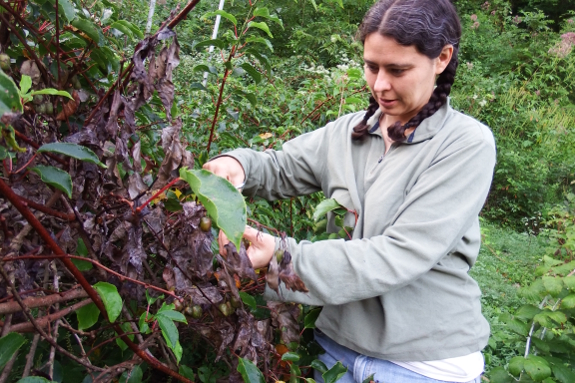
For a decade, our hardy
kiwi vines have been disease free. But as soon as they set fruit this
year, leaves started to turn brown on the bearing plant. The disease
looks strikingly like fire blight, so that's my working hypothesis even
though the internet doesn't report that particular bacterial disease
affects the
plant species.
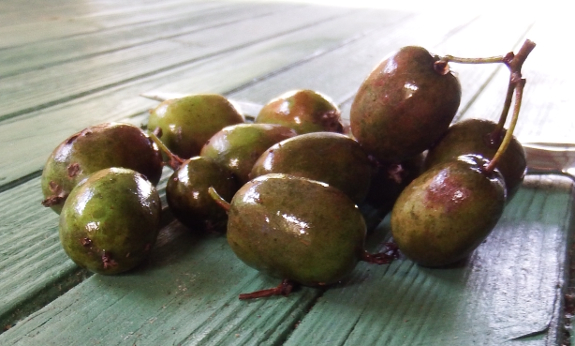
With leaves no longer
pumping sugars into the fruits, we decided to bring some inside as a
test harvest. The
seeds are black, which suggests the fruits are mature
enough to ripen off the vine. I'll keep you posted once we finally
get
to taste this fruit that's been ten years in coming!
Even after a Summer of neglect the butternut squash harvest was still decent.
Want more in-depth information? Browse through our books.
Or explore more posts by date or by subject.
About us: Anna Hess and Mark Hamilton spent over a decade living self-sufficiently in the mountains of Virginia before moving north to start over from scratch in the foothills of Ohio. They've experimented with permaculture, no-till gardening, trailersteading, home-based microbusinesses and much more, writing about their adventures in both blogs and books.
